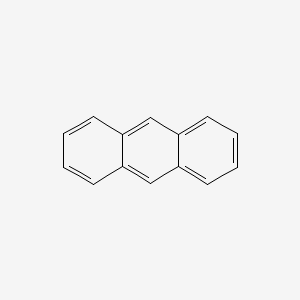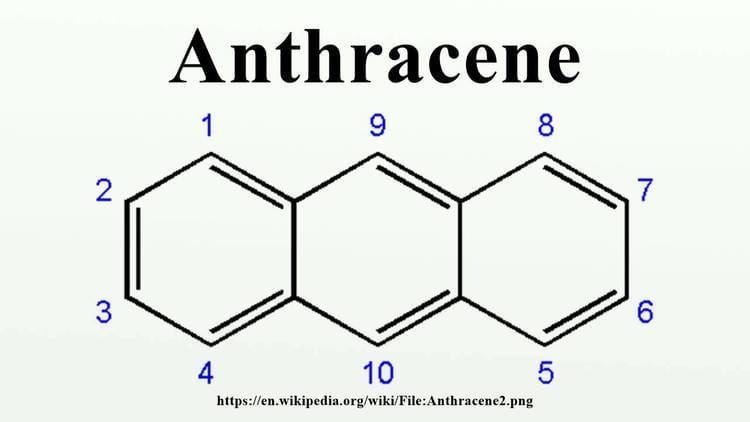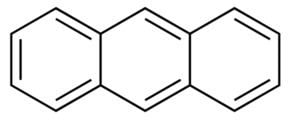Formula C14H10 Density 1.25 g/cm³ | Boiling point 340 °C Appearance Colorless | |
 | ||
Anthracene preparation structure and physical and chemical properties
Anthracene is a solid polycyclic aromatic hydrocarbon (PAH) of formula C14H10, consisting of three fused benzene rings. It is a component of coal tar. Anthracene is used in the production of the red dye alizarin and other dyes. Anthracene is colorless but exhibits a blue (400-500 nm peak) fluorescence under ultraviolet radiation.
Contents
- Anthracene preparation structure and physical and chemical properties
- Occurrence and production
- Reactions
- Uses
- Niche
- Derivatives
- Occurrence
- Toxicology
- References
Occurrence and production

Coal tar, which contains around 1.5% anthracene, remains a major source of this material. Common impurities are phenanthrene and carbazole. A classic laboratory method for the preparation of anthracene is by cyclodehydration of o-methyl- or o-methylene-substituted diarylketones in the so-called Elbs reaction.

It may also occur in the interstellar medium. More than 20% of the carbon in the universe may be associated with PAHs, including anthracene.
Reactions
Anthracene photodimerizes by the action of UV light:

The dimer, called dianthracene (or sometimes paranthracene), is connected by a pair of new carbon-carbon bonds, the result of the [4+4] cycloaddition. It reverts to anthracene thermally or with UV irradiation below 300 nm. Substituted anthracene derivatives behave similarly. The reaction is affected by the presence of oxygen.
Reduction of anthracene with alkali metals yields the deeply colored radical anion salts M+[anthracene]− (M = Li, Na, K). Hydrogenation gives 9,10-dihydroanthracene, preserving the aromaticity of the two flanking rings.
Chemical oxidation occurs readily, giving anthraquinone, C14H8O2 (below), for example using hydrogen peroxide and vanadyl acetylacetonate.
Anthracene also reacts with dienophile singlet oxygen in a [4+2]-cycloaddition (Diels–Alder reaction):
Uses
Anthracene is converted mainly to anthraquinone, a precursor to dyes.
Niche
Anthracene, a wide band-gap organic semiconductor is used as a scintillator for detectors of high energy photons, electrons and alpha particles. Plastics, such as polyvinyltoluene, can be doped with anthracene to produce a plastic scintillator that is approximately water-equivalent for use in radiation therapy dosimetry. Anthracene's emission spectrum peaks at between 400 nm and 440 nm.
It is also used in wood preservatives, insecticides, and coating materials.
Anthracene is one of the three components (the other two being potassium perchlorate and sulfur) which are used to produce the black smoke released during a Papal Conclave.
Derivatives
A variety of anthracene derivatives find specialized uses. Derivatives having a hydroxyl group are 1-hydroxyanthracene and 2-hydroxyanthracene, homologous to phenol and naphthols, and hydroxyanthracene (also called anthrol, and anthracenol) are pharmacologically active. Anthracene may also be found with multiple hydroxyl groups, as in 9,10-dihydroxyanthracene.
Occurrence
Anthracene, as many other Polycyclic aromatic hydrocarbons, is generated during combustion processes: Exposure to humans happens mainly through tobacco smoke and ingestion of food contaminated with combustion products.
Toxicology
Many investigations indicate that anthracene is noncarcinogenic: "consistently negative findings in numerous in vitro and in vivo genotoxicity tests." Early experiments suggested otherwise because crude samples were contaminated with other polycyclic aromatic compounds. Furthermore, it is readily biodegraded in soil. It is especially susceptible to degradation in the presence of light.
